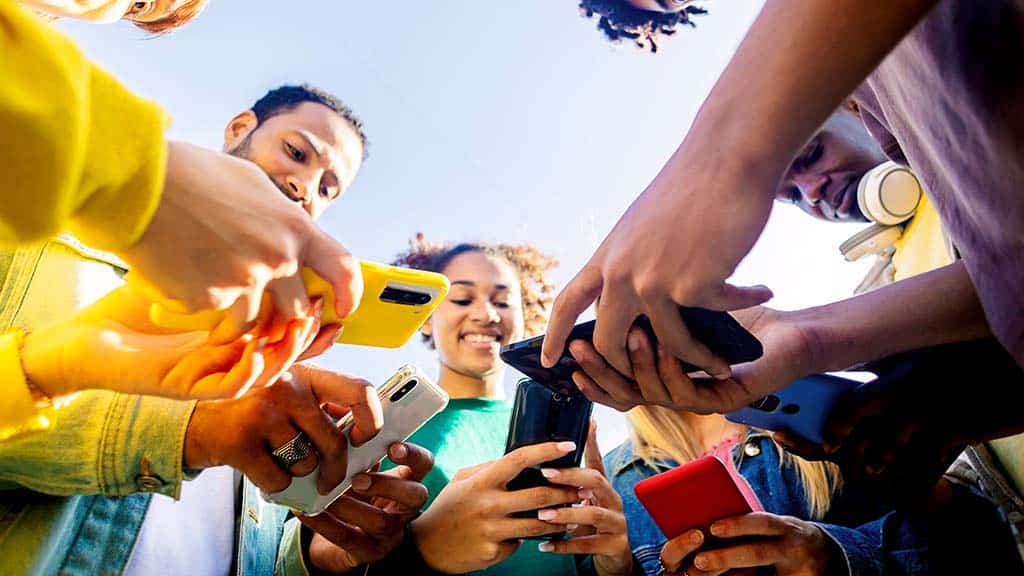The Science of Social Media Engagement: What Works and What Doesn’t in 2025
In 2025, social media engagement has become the gold standard for measuring success in digital marketing. While metrics like followers and likes once dominated conversations about performance, they now take a backseat to engagement, which reveals how deeply audiences connect with content. Engagement reflects actions like comments, shares, saves, and direct messages—interactions that indicate users are not just seeing your content but actively responding to it.
The reason engagement holds such value is simple: it drives visibility and builds relationships. Social media algorithms prioritize content with high engagement, increasing its reach to more users. Moreover, meaningful interactions foster a sense of connection between brands and their audiences, strengthening loyalty and trust.
For businesses aiming to maximize their social media presence, understanding the science behind engagement is crucial. A strategic approach can ensure your content resonates with your audience, sparking conversations and driving results. Whether you’re leveraging the expertise of a social media agency or managing campaigns in-house, mastering engagement is essential to staying competitive in the ever-evolving digital landscape.
The Psychology of Social Media Engagement
Engagement on social media is rooted in psychology. Understanding what drives users to interact with content can help brands craft posts that resonate deeply and inspire action. Emotions play a central role in engagement, with content that evokes humor, curiosity, surprise, or empathy outperforming neutral or overly promotional posts.
Humor is particularly effective in 2025, as users seek moments of levity in their feeds. Brands that can incorporate wit and lightheartedness into their messaging often see higher engagement rates. For example, a food brand might post a relatable meme about midnight snacking, inviting comments or shares from users who connect with the sentiment.
Curiosity is another powerful motivator. Content that teases information or poses intriguing questions encourages users to click, comment, or share to learn more. For instance, a fitness company might post a question like, “What’s the one exercise you should never skip? Click the link to find out,” sparking curiosity-driven interactions.
Empathy, too, drives meaningful engagement. Content that addresses users’ challenges, aspirations, or values creates a sense of connection and encourages dialogue. A sustainable fashion brand, for example, could post about the impact of fast fashion on the environment, inviting users to share their thoughts or experiences.
Understanding these psychological triggers allows brands to move beyond surface-level interactions and foster deeper connections with their audience. By tapping into the emotions and motivations that drive engagement, you can create content that not only grabs attention but also inspires action.
Content Formats That Maximize Engagement
The type of content you create significantly impacts engagement levels. In 2025, short-form video, interactive posts, and visually dynamic formats dominate social media, capturing users’ attention and encouraging interaction.
Short-form video remains the king of content, with platforms like TikTok, Instagram Reels, and YouTube Shorts driving the majority of engagement. These videos are quick, visually engaging, and often tied to trending audio or challenges, making them highly shareable. For example, a beauty brand could create a 15-second tutorial using trending music, prompting users to save or share the video with friends.
Interactive content, such as polls, quizzes, and Q&A sessions, is another powerful engagement driver. These formats invite users to participate actively rather than passively consuming content. A travel brand, for instance, might post an Instagram Story poll asking, “Beach or mountains for your next getaway?” encouraging followers to interact and share their preferences.
Carousel posts also perform well, especially on Instagram. These multi-image posts encourage users to swipe through, increasing the time they spend engaging with the content. For example, a tech company could use a carousel to showcase a product’s features step by step, driving both engagement and education.
To maximize engagement, it’s essential to tailor your content formats to the preferences of your audience and the strengths of each platform. Experimenting with different formats and analyzing performance data can help you refine your strategy and consistently deliver content that resonates.
The Power of Storytelling in Capturing Attention
Storytelling is one of the most effective tools for driving engagement on social media. In a landscape saturated with content, stories create emotional connections that capture attention and keep users coming back for more. A compelling narrative goes beyond promoting a product or service—it invites your audience to be part of a larger journey, fostering loyalty and trust.
Stories are effective because they tap into universal emotions and experiences. A well-crafted post can make users feel inspired, nostalgic, or understood, prompting them to comment, share, or save the content. For example, a fitness brand might share the transformation story of a customer who overcame obstacles to achieve their health goals, encouraging followers to celebrate the journey or share their own experiences.
In 2025, visual storytelling remains a dominant force. Short-form videos, Instagram Reels, and TikTok posts are ideal for weaving narratives in a visually engaging way. For instance, a travel brand could create a mini-documentary-style video showcasing a traveler’s adventure, from planning to exploration, while subtly highlighting their products or services.
Brands can also use storytelling to humanize their identity. Sharing behind-the-scenes content, team stories, or customer testimonials brings a personal touch to your online presence, making it easier for audiences to relate to your brand. This authenticity builds stronger connections and encourages ongoing engagement.
To maximize the impact of storytelling, focus on authenticity and relevance. Tailor your narratives to reflect your audience’s values and aspirations, ensuring your content resonates deeply. The more your audience sees themselves in your stories, the more likely they are to engage with your brand.
Timing is Everything: Posting at the Right Moment
When it comes to engagement, timing can make all the difference. Posting at the right time ensures your content reaches your audience when they are most active and likely to interact. In 2025, optimizing your posting schedule is more important than ever, as algorithms prioritize content with immediate engagement.
Different platforms have different peak activity times, so understanding your audience’s behavior is key. For example, LinkedIn users are typically more active during weekdays, while Instagram and TikTok see higher engagement in the evenings and weekends. Using platform analytics tools can provide insights into when your followers are online, helping you schedule posts for maximum visibility.
Beyond general trends, consider your audience’s time zones and daily routines. If your brand targets working professionals, posting during lunch breaks or early evenings might yield better results than morning or late-night uploads. Similarly, a brand catering to Gen Z might see more engagement late at night when this demographic tends to be active online.
Real-time content can also drive engagement. Responding to trending events, cultural moments, or breaking news shows your brand is relevant and tuned into what matters to your audience. For example, a sportswear brand might post a celebratory tweet during a major sporting event, encouraging fans to join the conversation.
Consistency is just as important as timing. Establishing a regular posting schedule helps set audience expectations and keeps your brand top of mind. By aligning your content with your audience’s activity patterns, you can increase the chances of sparking meaningful engagement.
Audience-Centric Content Creation
Understanding your audience is the foundation of any successful engagement strategy. In 2025, brands must go beyond surface-level demographics to gain a deep understanding of their audience’s preferences, behaviors, and values. This insight allows you to create content that speaks directly to their interests, driving higher levels of interaction.
Audience research tools, such as social media analytics and customer surveys, are invaluable for uncovering these insights. Analytics can reveal which types of content perform best, what time your audience is most active, and which platforms they prefer. For instance, a beauty brand might discover that tutorials generate more engagement than product photos, leading them to focus on creating educational video content.
Engaging directly with your audience is another way to gain valuable insights. Hosting Q&A sessions, running polls, or simply responding to comments can help you understand what your audience cares about and expects from your brand. These interactions also foster a sense of community, encouraging ongoing engagement.
Personalization is key to audience-centric content. Tailor your messaging, visuals, and tone to reflect your audience’s preferences and aspirations. For example, a sustainable fashion brand targeting environmentally conscious consumers might emphasize eco-friendly practices and share tips for reducing waste.
By keeping your audience at the center of your content strategy, you can create posts that resonate deeply and inspire action. This approach not only drives engagement but also builds stronger, more meaningful relationships with your audience over time.
Trends That Enhance Engagement in 2025
Staying ahead of social media trends is essential for driving engagement in 2025. Platforms continue to evolve, and new features emerge regularly, offering innovative ways for brands to connect with their audiences. By leveraging these trends strategically, brands can maintain relevance and capture attention in an increasingly competitive space.
One significant trend is the growing popularity of augmented reality (AR) and interactive filters. AR allows brands to create immersive experiences that engage users directly. For instance, a beauty brand might develop an AR filter enabling users to virtually try on makeup, fostering playful interaction while promoting products. Similarly, a travel brand could use AR to create destination-themed filters, encouraging followers to share personalized content.
Live shopping is another trend transforming engagement. Platforms like Instagram and TikTok now offer seamless shopping experiences integrated into live streams. Brands can host live events where influencers or team members showcase products, answer questions, and interact with viewers in real-time. This format drives both engagement and conversions, as users can make purchases directly from the stream.
Social challenges and user-generated content (UGC) campaigns remain effective for capturing attention. By encouraging audiences to participate in trending challenges or share content under branded hashtags, brands can amplify their reach and foster a sense of community. For example, a fitness brand might launch a “7-Day Wellness Challenge,” prompting users to share their progress and tag the brand for a chance to be featured.
Incorporating these trends into your strategy can help your brand stand out while keeping your content fresh and engaging. Experimenting with innovative formats and features ensures you stay ahead of the curve and maintain a strong connection with your audience.
Common Engagement Mistakes to Avoid
While the goal of engagement is to foster meaningful interactions, many brands fall into traps that hinder their efforts. Recognizing and avoiding these common mistakes is crucial for building trust and sustaining audience interest.
One major pitfall is overposting. Flooding your audience’s feed with too much content can lead to fatigue, diminishing engagement and causing followers to tune out. Instead, focus on quality over quantity, ensuring each post provides value and aligns with your audience’s preferences.
Inconsistent branding is another common issue. When your tone, visuals, or messaging vary too much, it can confuse your audience and weaken your brand identity. For instance, a luxury brand posting memes that don’t align with its premium image risks alienating followers. Maintaining consistency across all posts helps reinforce your brand’s personality and builds trust.
Ignoring audience interactions is a significant missed opportunity. Failing to respond to comments, questions, or direct messages signals a lack of interest in your community. On the other hand, actively engaging with followers fosters a sense of connection and encourages ongoing interaction. For example, a tech brand that answers customer queries promptly and professionally builds goodwill and loyalty.
Lastly, overly promotional content can turn off your audience. Posts that focus solely on selling rather than providing value often come across as insincere. Instead, balance promotional efforts with content that educates, entertains, or inspires, creating a more well-rounded social media presence.
Measuring Engagement Effectively
Understanding the success of your engagement efforts requires tracking the right metrics. In 2025, brands are moving beyond surface-level metrics like reach and impressions, focusing instead on indicators that reflect meaningful interaction and impact.
Key engagement metrics include comments, shares, saves, and click-through rates. Comments show that users are actively engaging in conversations around your content, while shares amplify your reach by introducing your brand to new audiences. Saves indicate that users find your content valuable enough to revisit later, a strong signal of quality.
Sentiment analysis is another essential tool for measuring engagement. It evaluates the tone of user interactions, helping you understand how your content resonates emotionally with your audience. Positive sentiment suggests your content is well-received, while negative sentiment highlights areas for improvement.
Conversions, such as website visits or purchases driven by social media campaigns, are critical for assessing ROI. Using tools like tracking links, UTM parameters, or affiliate codes can help you attribute these actions to specific posts or campaigns, providing a clear picture of what drives results.
Analyzing engagement data over time is crucial for refining your strategy. Patterns and trends in audience behavior can inform adjustments to content, timing, or platform focus, ensuring your efforts remain effective and aligned with your goals.
Building a Sustainable Engagement Strategy
Engagement is not just about short-term results—it’s about fostering long-term relationships that keep your audience invested in your brand. Building a sustainable engagement strategy ensures your efforts drive ongoing interaction and loyalty.
Consistency is key to sustainability. Posting regularly and maintaining a cohesive brand voice create a sense of reliability, encouraging followers to engage with your content over time. For example, a lifestyle brand might establish a weekly series, such as “Motivation Mondays,” to build anticipation and routine engagement.
Incorporating user-generated content (UGC) into your strategy helps sustain momentum. Featuring customer testimonials, reviews, or creative contributions not only highlights your community but also provides fresh content that resonates with your audience. A fashion brand showcasing followers’ outfit photos, for instance, fosters a sense of inclusion and inspires further participation.
Interactive content, such as polls, quizzes, or live Q&A sessions, keeps engagement dynamic. These formats invite real-time participation, making followers feel actively involved in your brand’s narrative. For example, a food brand hosting a live cooking demo can engage viewers by answering questions and taking recipe suggestions.
Finally, adaptability is critical for sustainability. Social media trends and platform algorithms change frequently, so staying informed and agile allows your strategy to evolve alongside audience preferences. Monitoring engagement data and experimenting with new formats or approaches ensures your efforts remain fresh and impactful.
By focusing on consistency, community, and adaptability, you can create an engagement strategy that drives lasting connections and positions your brand for long-term success.







